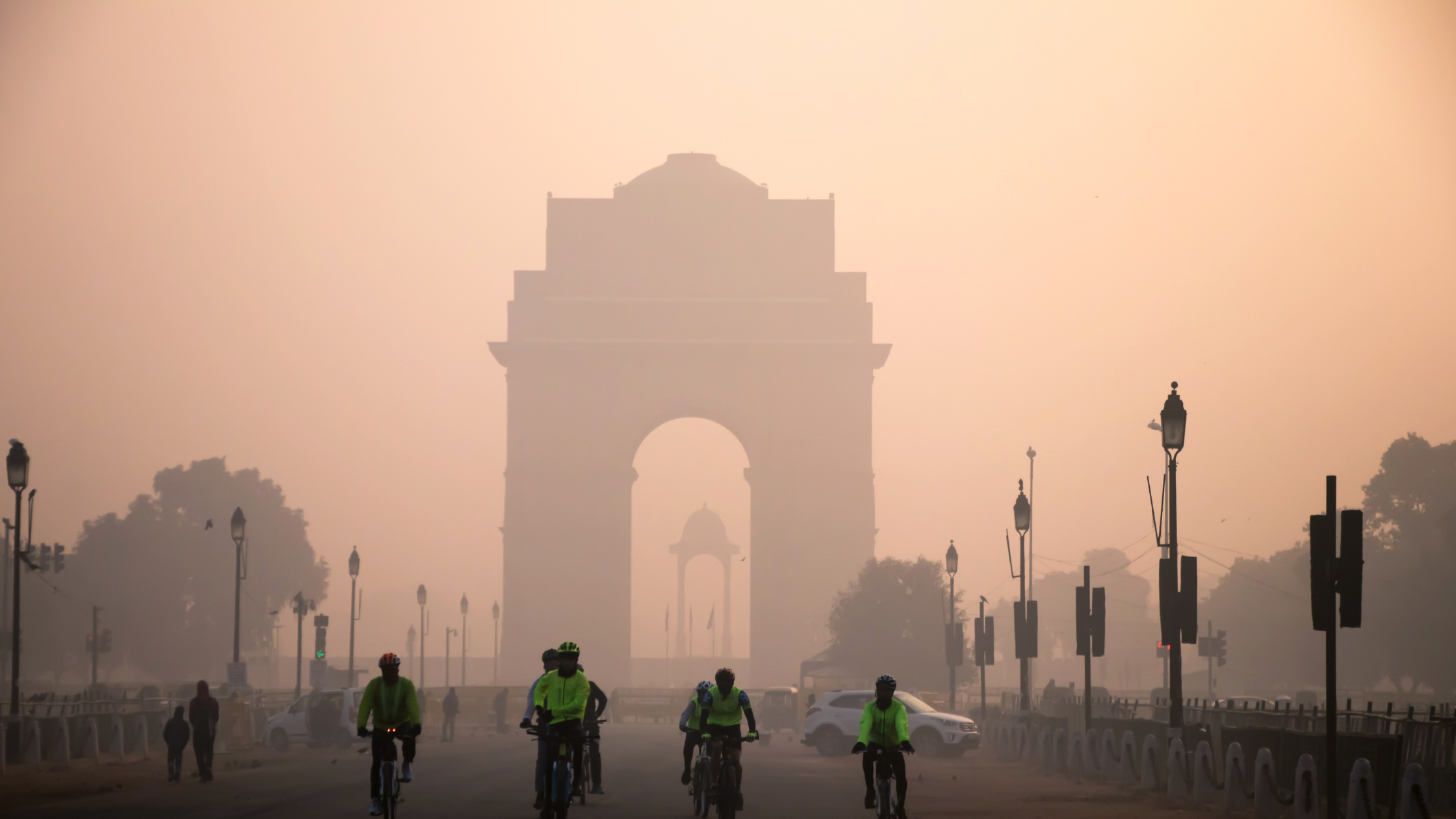Air pollution in India’s capital surged to its worst levels in years, covering the city in a cloud of thick smog. Despite the government’s vows to tackle the problem, it’s becoming an annual public health crisis.
Hundreds of flights were diverted, delayed, and canceled over the weekend due to poor visibility, schools and offices were closed Monday and officials rushed to implement an arsenal of emergency measures to try to reverse the eroding air quality. Millions of antipollution masks have been distributed at schools, colleges, hospitals, and local markets.
For years now, New Delhi, a megacity of more than 20 million people, has been engulfed each year as the weather cools. A thick haze builds up from the emissions of cars and coal-based power plants, swirling dust from construction sites, roads, and smoke from burning crop stubble in neighboring states. The cool weather tends to trap pollutants across all of North India against the Himalayan mountains. Nearly all of Northern India is affected, but nowhere more than the capital.
An app that uses pollution data to explain air quality via cigarette smoking — found that the Indian capital’s present air quality was akin to smoking 33.2 cigarettes per day. The air quality index (AQI), measuring levels of PM 2.5 — tiny particulate matter in the air — deteriorated to above 900, way over the 500-level that qualifies as “severe-plus” on Sunday (11/3/2019).
For more details click here.
